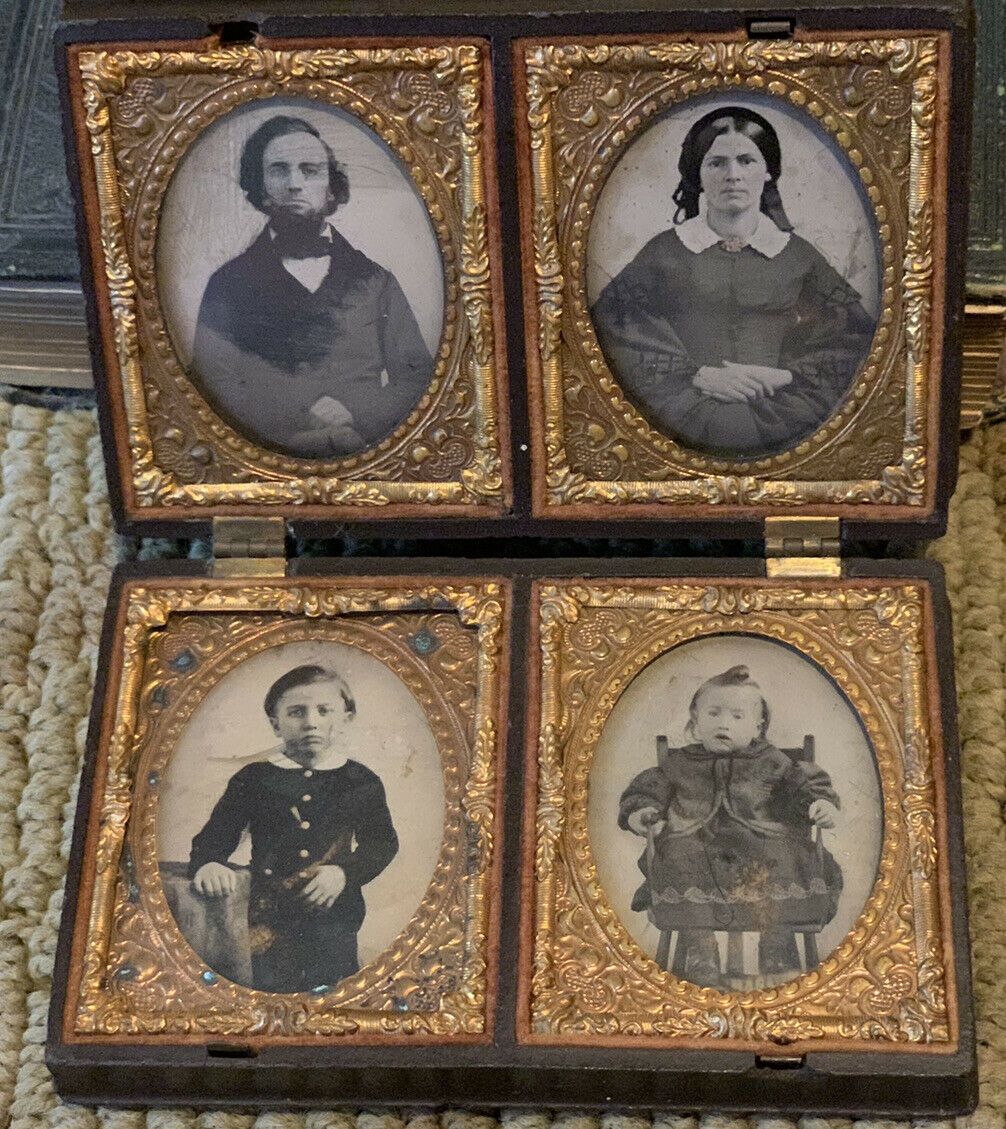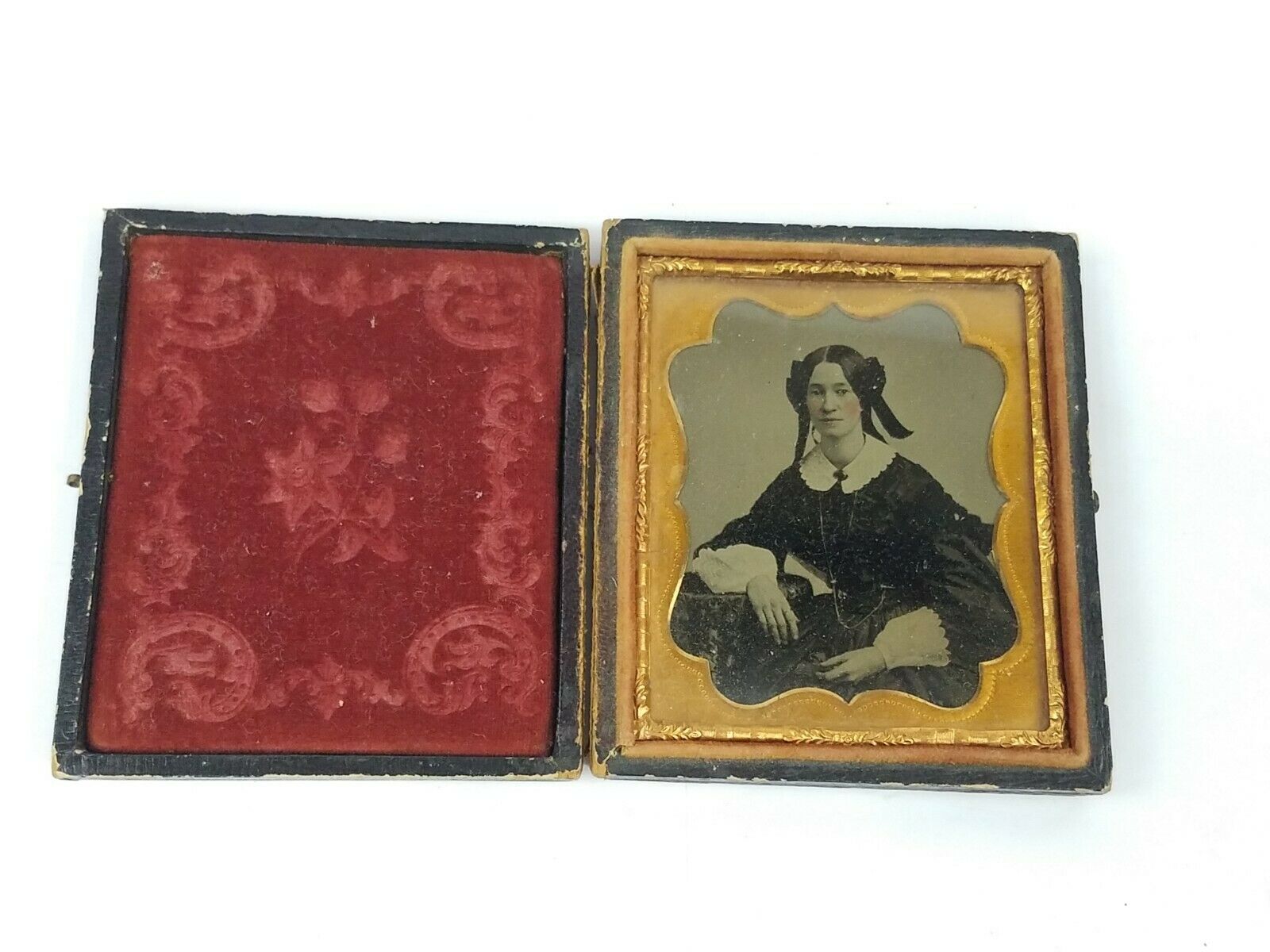-40%
1858 EARLY PHOTOGRAPHY - Ambrotype in Wood Case - AMERICAN WOMAN WITH CHILDREN
$ 71.28
- Description
- Size Guide
Description
1...rare books at fair prices...!
Search by Topic
Africa
America - North
America -South
Arabia - Middle East
Arctic - Antarctic
Asia - Central
Asia - China & Japan
Asia - Southeast
Australia & Pacific
Bibliographies
Europe
Globes
Graphic Arts
Literature
Maps & Prints
Mountaineering
Natural History
Russia
Sciences
Signed & Inscribed
Sir Richard F. Burton
Ambrotype Photograph
American Woman with Two Children
in Original Wood Case
1858
Original Ambrotype portrait of a middle class mother of two, taken in a photographer's studio with a white bannister background mural, sealed between two glass plates for protection, complete with elegant embossed brass matting and preserver, contained in the original wood case.
Very Good Condition, well preserved.
Ambrotype portrait photograph circa 1858-59
Sixth plate glass (1/6), approximately 2 5/8" x 3 1/4"
Lovely portrait with nonpareil brass mat and ornate brass preserver.
Modest gilt highlight to neck broach
Housed in an elegant wood case covered in leather with tooled floral design to front and back, a patterned red velvet pad and clasps.
One of two clasps working,perforation to velvet, otherwise
Very Good Original Condition
A lovely example of early photography and mounting.
Ambrotypes were made from the early 1850s
and for approximately thirty years, though wide-spread use was less than ten years, The was invented by Frederick Scott Archer in collaboration with his colleague Peter Fry. The ambrotype is a thin negative image on glass made to appear as a positive by showing it against a black background. The reverse of the glass plate was either painted black or backed with a black material. The ambrotype was an affordable alternative to the daguerreotype, similar in size and also mainly used for portraits. Just like daguerreotypes they were typically kept in wooden or leather cases and were unique images.
By the summer of 1855 the ambrotype was fast becoming the most popular form of photography among Americans
, preferred even over the daguerreotype. One advantage it did possess over the silver daguerreotype was that it did not tarnish.
Ambrotypes are most commonly found in North America. In 1854 American photographer James Ambrose Cutting patented the process, which was a particular variant of that which used Canada balsam to seal the collodion plate to the cover glass. Since the ambrotype was developed directly on a plate of glass, as opposed to on a silver-coated copper plate as was the daguerreotype, one can usually see through the image when it is held up to the light.
Cutting also patented the double-pane glass between which the images were ensconced.
The ruby glass support, which eliminated the need to have a dark backing, appeared around 1854 in England and between 1856-58 in America.
There are known samples on green, amber or blue glass, though these are more scarce. Single glass panes were also in vogue from approximately 1856 to 1864.
The first daguerreotypes were protected by only a mat and glass, and then placed in a case. Appearing around 1847, and becoming a standard part of cased images,
the preserver is a brass frame that wraps the glass, mat, and image.
Early preservers were fairly plain, sometimes adorned with simple patterns and were prone to splitting at the corners. In about 1858-1859, preservers with reinforced corners and more elaborate artwork were introduced.
The American style was to protect daguerreotypes or ambrotypes in a book-like case.
When closed, the case was a small box with a decorated exterior. When open, the right side displayed the daguerreotype behind glass. Early cases were usually leather-covered wood cases. They were lined with felt or occasionally silk. Around 1856 a new composite made from saw dust and varnish was used to create thermoplastic. These cases were called 'union cases' in reference to the union of different materials which made up the composite. A couple of years later, in 1858, the fronts and backs of wood cases were also produced from pressed wood chips or papier-mâché. These cases featured embossed designs on their fronts, although the relief was not as deep as on the Union Cases.
Powered by
eBay Turbo Lister
The free listing tool. List your items fast and easy and manage your active items.












